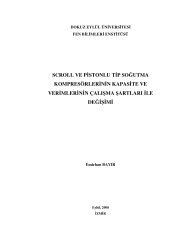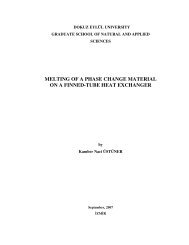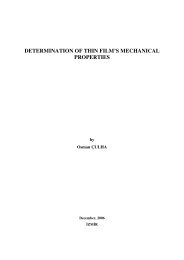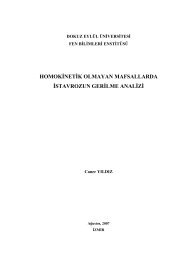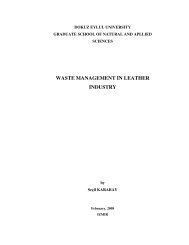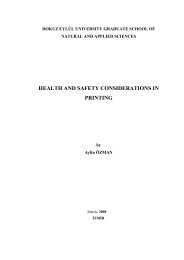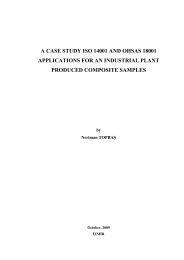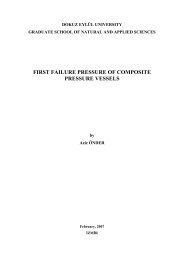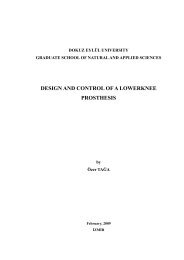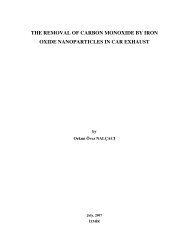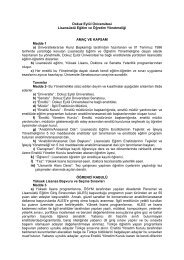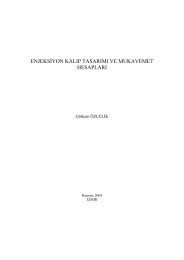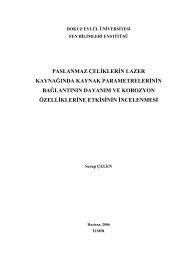DETERMINATION OF THIN FILM'S MECHANICAL PROPERTIES
DETERMINATION OF THIN FILM'S MECHANICAL PROPERTIES
DETERMINATION OF THIN FILM'S MECHANICAL PROPERTIES
Create successful ePaper yourself
Turn your PDF publications into a flip-book with our unique Google optimized e-Paper software.
1<br />
CHAPTER ONE<br />
INTRODUCTION<br />
Although well known for approximately 100 years, classical hardness test has<br />
gained new popularity during the last decades.<br />
The advantage of the indentation test, in comparison with a uniaxial tensile test, is<br />
of course the relative simplicity of the experimental setup. On the other hand, an<br />
obvious drawback is the very complicated mechanical problem arising owing to<br />
inelastic and/or inhomogeneous deformation in the indented materials. Therefore,<br />
until recently the interpretation of indentation tests have relied heavily on semiempirical<br />
formulae. The work by Tabor is perhaps the best example of this, with no<br />
or little theoretical foundation. With the advent of modern computers and advanced<br />
numerical methods, however, the understanding of the mechanics involved during<br />
ball indentation (Hill et al., 1989; Kral et al., 1993; Larsson, 1994), cone indentation<br />
(Laursen and Simo, 1992) and Vickers Indentation (Giannakopoulos and Suresh,<br />
1994), has increased rapidly in recent years.<br />
These new interests in the mechanical behavior of indentation testing are to a<br />
large extent a result of the increased use of new materials. These materials are<br />
notoriously difficult to characterize through uniaxial or other standard tests, which in<br />
many cases make indentation testing the only possible alternative for determining<br />
their mechanical properties.<br />
The qualities of small size and non-destructive test capability make the<br />
indentation technique superior to the tension test. For very small volumes of<br />
material, the uniaxial test is inapplicable. Furthermore, the structural materials may<br />
not be removed to do the tension test in most cases, for instance, the materials used<br />
in the electronic solders or engineering welds. Indentation technique can evaluate the<br />
material properties while keeping the structural integrity.<br />
1



